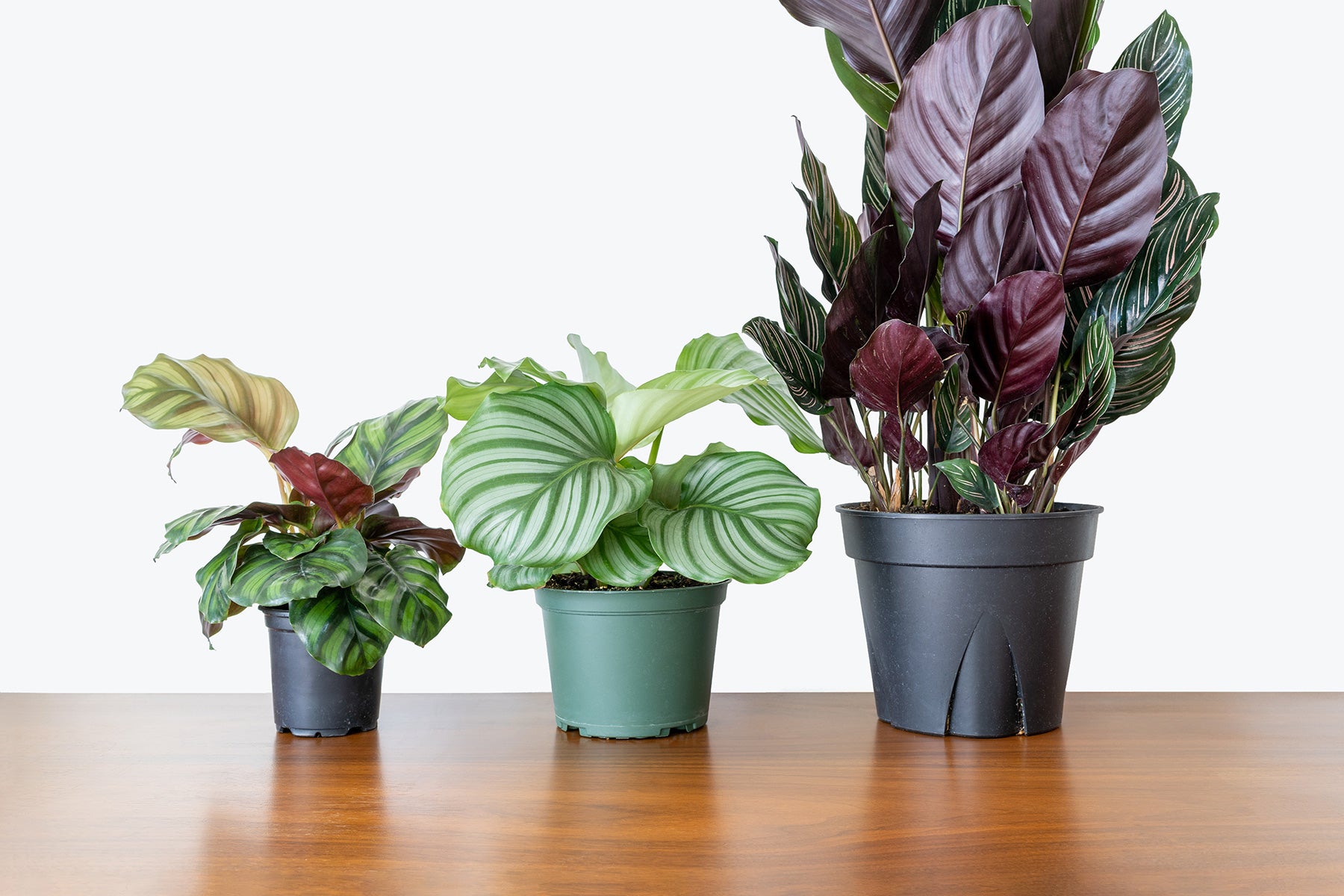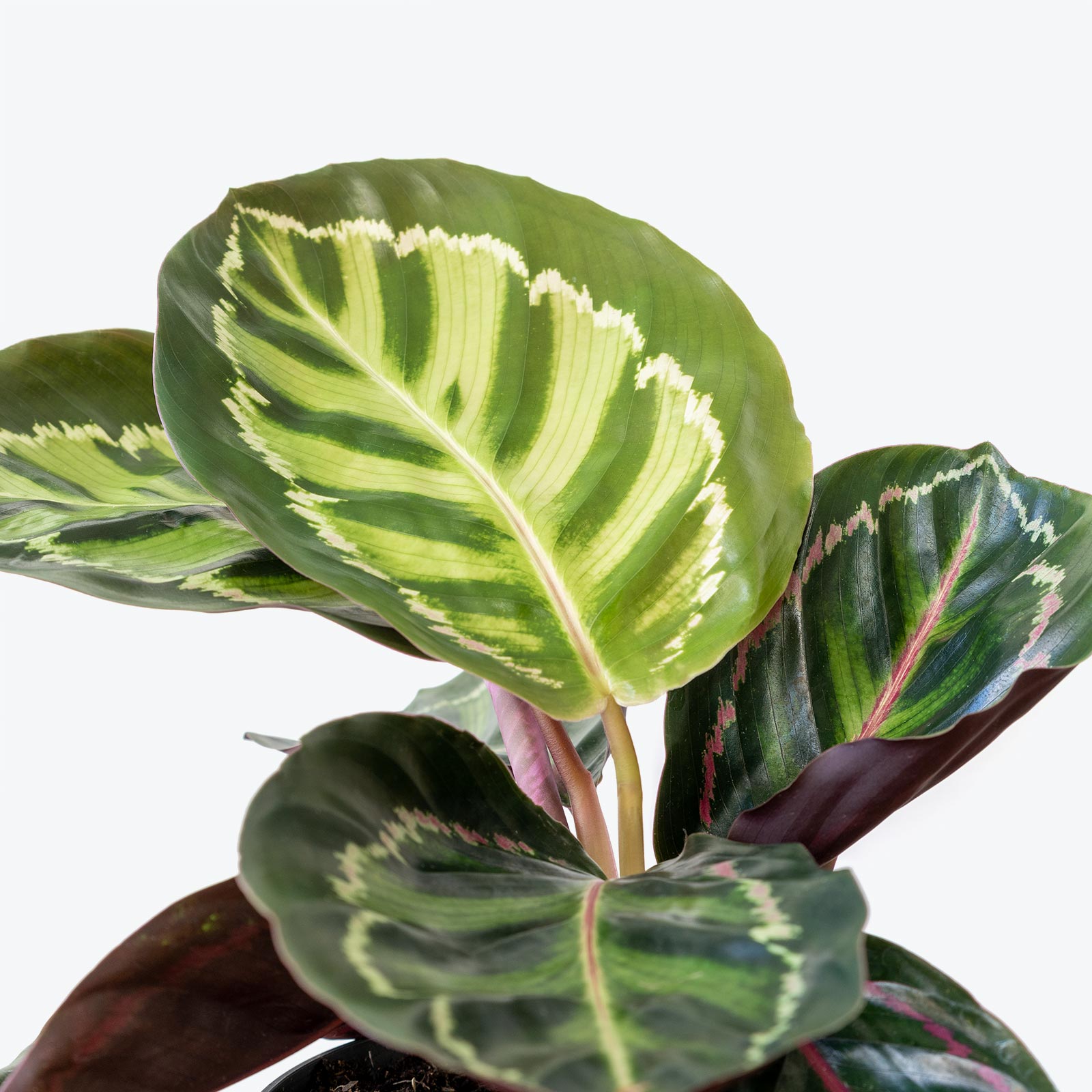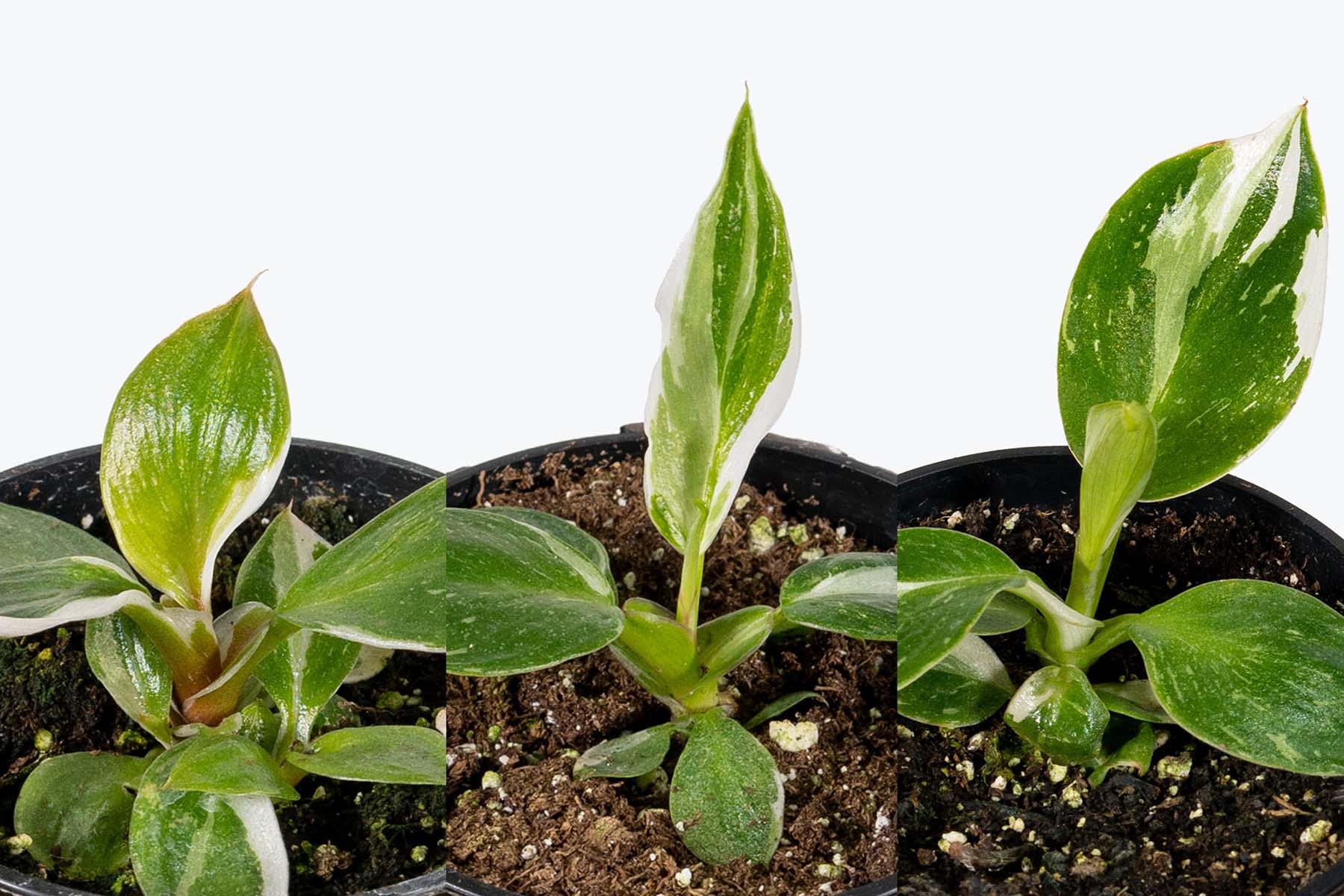
How to take care of your Calathea
You know those people that you meet and you seem to hit it off together but over time, they start to show their true colours and you have to put in a lot of effort in the relationship and it seems very one-sided? Well, that is what Calatheas are to us. Now, we’re not trying to scare you off of these beauties, we just want you to be realistic when it comes to your expectations of the care and attention that they need.

△ Calathea Rosea Picta
Each species in this genus has unique, intricate designs on their leaves, making them quite easily identifiable once you start delving into them. Not only that, but some also have a velvet-like texture to their foliage while others have smooth, waxy leaves. So basically, it’s not an “I’ve got one so I’ve got them all” mentality, you must purchase each of the varieties you love as no two Calathea look the same! We’re not enabling you at all...
If you want beautiful payoff while also being willing to put in a little bit of effort, these are the plants for you. Besides, who needs flowers when you have purple foliage? They are up there with Ferns and Fiddle Leaf Figs in regards to difficulty but if treated and cared for properly, you will not be disappointed!
Light Requirements
If we’re being honest, most plant parents have had at least one Calathea casualty in their time of plant ownership. However, that is what our care guide is for! We are going to outline everything that you should do in order to have a happy, healthy Calathea in your care.
For best results, these plants need to be in medium to bright, indirect light. Avoid any direct sun as the leaves will burn with too much sun exposure. There are a few select varieties that will “tolerate” low light, but remember that when we say tolerate, that means that they probably won’t thrive and won’t give much payoff if any. When in doubt on what sort of light your specific Calathea needs, go with medium to bright.
Now, let’s outline the lowest light conditions (i.e. medium light conditions) that your Calathea can handle:
- A few meters back from a South, West, or East facing window
- Next to a South, West, or East facing window that is facing a courtyard or is blocked by a nearby building
- Next to a South, West, or East facing window that has blinds which are most often closed.
When placed in these spots, it is not uncommon for your Calathea to not be too full or produce tons of new growth. They may also have smaller leaves or be slightly less perky. But since you are already prepared for this, it shouldn’t be too shocking when one of these outcomes occurs!
As for ideal lighting conditions to keep your Calatheas foliage perky, shiny and stunning, place your plant in one of the following lighting options:
- Next to, or close by, a South, Southwest, or West-facing window that has sheer curtains for some bright, indirect light (remember, they cannot handle full sun so the curtains keep the leaves from getting burned)
- About 5-10ft away from a South, Southwest, or West-facing window without curtains
- Directly next to a North or East-facing window
Here’s an interesting fact: Calathea leaves do more than just sit there looking pretty. At night time, their leaves fold up as if they were getting ready for bed, then in the morning, they unfold, searching for the sun. How else do you think they got their nickname of “prayer plants”?
Watering Requirements
Watering instructions are pretty straightforward for most Calathea: water your plant when the top two inches of soil is dry to the touch. In the summer, this could mean that you have to water your plant a couple of times a week, depending on how much light it is getting and how quickly the soil is drying out. In the winter, this could mean not watering for 7-10 days as there is a lot less growth in the winter and soil tends to dry out slower. Always keep an eye on your plant in its specific spot as everyone grows their plants in different conditions.
There are some varieties that can be slightly drought-tolerant, where they will bounce back after a slight period of less water, but most will show signs of not loving those conditions, such as browning on the edges of leaves or not producing lots of new growth. Best to keep the soil evenly moist at all times and keeping a watchful eye on your plant.
If you really feel like spoiling your plant, which you should every once in a while obviously, use rainwater or distilled water to water your plant, they tend to not enjoy tap water too much and that can also cause browning around the tips of the leaves. It’s also a good idea to shower off your leaves every once in a while, as this can wash off any dust that has accumulated or any potential pests as well.
Humidity
These plants love humidity, which is one of the reasons they are known as such divas. Now don’t get us wrong, they can live in not the most humid conditions, but they will definitely be more prone to browning of their leaves and maybe even more pest prone if you are not careful. Keep them away from any drafts, such as cold windows in the winter or any heating/air conditioning vents.
To increase the humidity in our dry homes, especially during the winter, you can either mist your plants, or, if you have the extra money in your budget, you could purchase a humidifier. Keep it in the room that your Calathea is in but it will increase the general humidity in the whole room, which your other plants will appreciate as well. You could also place your plant on a bed of pebbles just covered with water. This allows the water to evaporate, raising the humidity in the air around your plant, while not letting it sit in water for an extended period of time.
Doing all of this will still not guarantee you perfect, pristine leaves, but it will provide the best environment your home can provide for these high-maintenance plants. Even in the wild, leaves yellow and crisp over time!
Fertilizing
Prayer plants don’t require too much when it comes to fertilizing, as they are not known for their flowers and have pretty consistent growth during the growing months. Fertilize once a month through the Spring and Summer months and then do not fertilize throughout the Winter. Just use a generic house plant fertilizer that any greenhouse, garden centre, or plant shop offers!
Toxicity
Unlike the majority of houseplants, Calathea are non-toxic to ingest, by both pets and children! Although it is always recommended to keep from ingesting any houseplants, you can feel comfortable and safe having these beauties around your home in the potential case where someone feels like having a snack.
Common Pests & Problems
Fungus gnats
These can happen with any houseplant. They appear when the air is dry and the soil stays wet, which is hard to avoid in our Winter. Some solutions are: a mix of apple cider vinegar with honey in a shallow bowl to catch them, mix one-part peroxide with four parts water and pour that through the soil to kill any larvae, or place sticky fly paper strips by your plant.
Spider mites
Unfortunately Calatheas are quite susceptible to these pests. You will often see a sticky residue on the undersides of the leaves and tiny webbing all along the leaves. Wash the plant off and allow the leaves and stems to dry off, then treat the entire plant (stems included!) with a neem oil mix or a spider mite spray you can get from your local garden centre or plant shop.
Brown and crispy on the edges of leaves
Again, if the leaves aren’t dying off just because of age, the plant is probably underwatered or there could be a salt build-up. Water more often than you have been and start using filtered, distilled, or rainwater. Also, up the humidity in the room, because as we have already mentioned, these little guys need the perfect environment.
Curled leaves
Another potential sign of not being watered enough.
Yellow or brown, mushy stems
A common sign of overwatering, so decrease the watering and keep an eye on the soil. When the top two inches of soil is dry to the touch, water thoroughly again.
With all that being said, good luck with your new plant!






